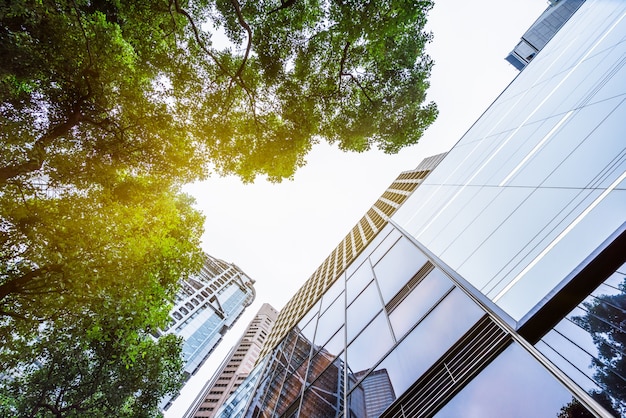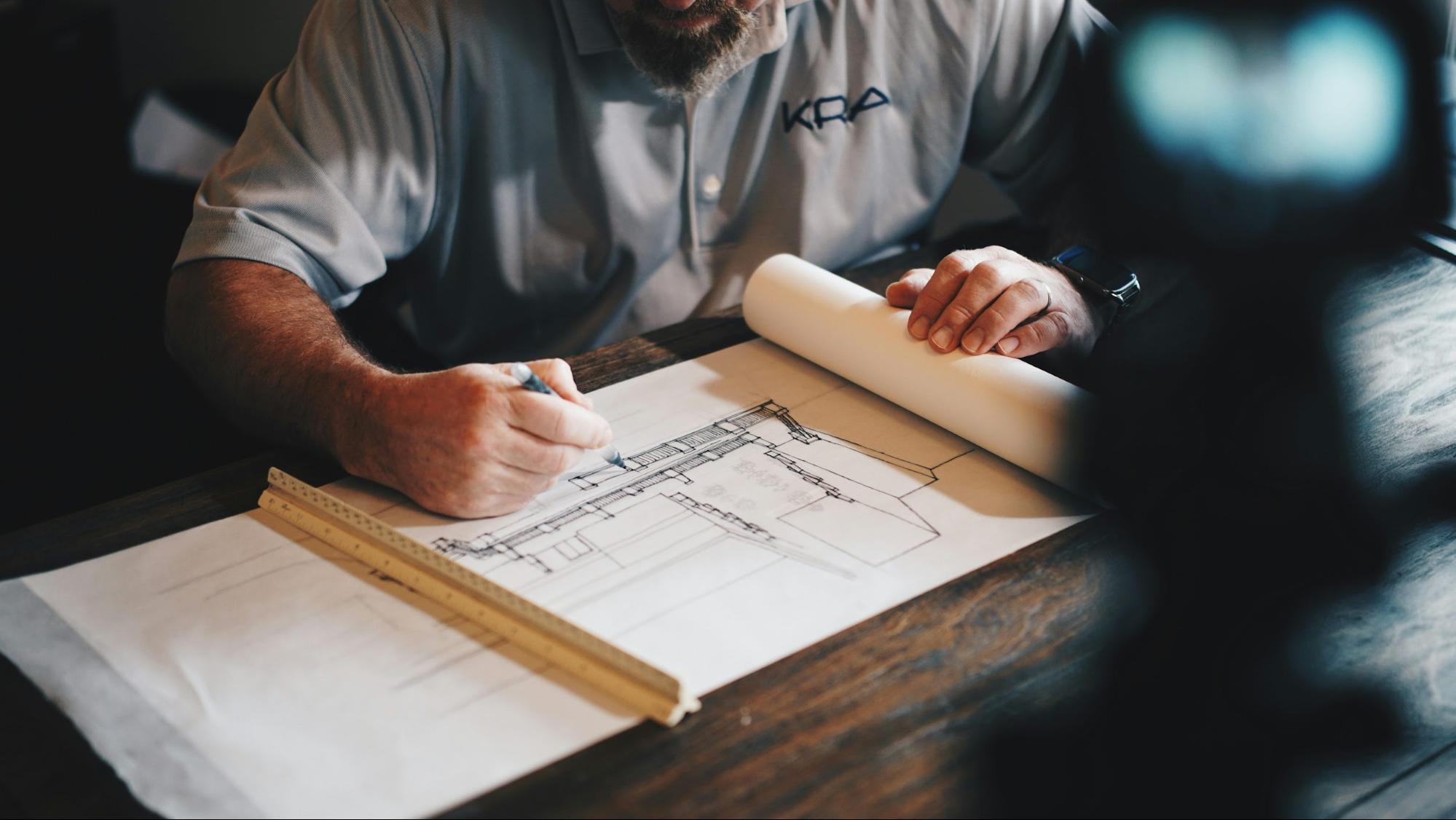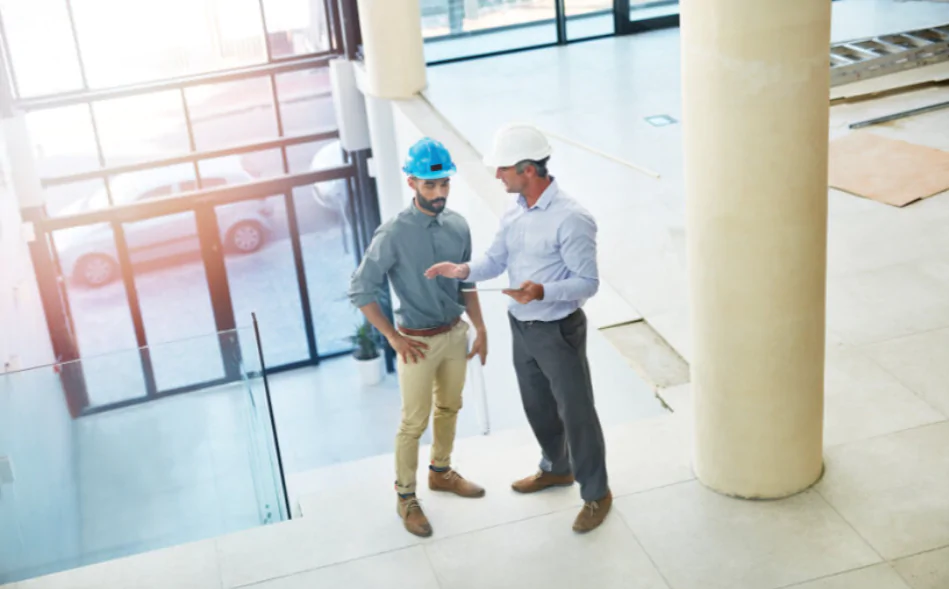
Sustainable commercial construction stopped being just a trend a long time ago. Today, it’s a necessity for businesses.
Advancements in technology, materials, and methodologies have driven the evolution toward sustainable practices in commercial construction.
Businesses that adopt sustainable commercial construction practices minimize their environmental footprint and position themselves as leaders in innovation and responsibility.
This article explores practical examples of sustainable practices, their economic and reputational benefits, and examples demonstrating the transformative impact of sustainability in commercial construction.
The past commercial constructions with outdated energy practices
Historically, the industry relied on energy-intensive processes and non-renewable resources, contributing to environmental degradation.
These outdated methods, while effective in meeting the demands of a growing economy, lacked the foresight and sustainability considerations that are now critical.
Heavy reliance on fossil fuels
In the past, the construction process relied on fossil fuels, from powering heavy machinery to heating materials such as asphalt and concrete. This dependence led to high greenhouse gas emissions, contributing to climate change and air pollution.
Inefficient energy systems in buildings
Older commercial buildings were often constructed without energy efficiency in mind. HVAC systems, lighting, and insulation were designed using technology that consumed large amounts of energy, resulting in increased operational costs and carbon footprints.
Minimal use of recyclable or sustainable materials
Traditional construction favored materials like cement, steel, and timber, often sourced through energy-intensive methods. Waste management during and after construction was rarely a consideration, leading to substantial landfill contributions.
Lack of integration between design and sustainability
Past construction methodologies typically treated sustainability as an afterthought. Design and material selection prioritized cost and availability over environmental impact, leading to structures that failed to adapt to modern energy efficiency standards.
As the environmental consequences of these practices became more apparent, the industry began to shift. Advancements in technology and growing awareness of sustainability introduced new standards that prioritize renewable energy, efficient resource use, and waste reduction, redefining the future of commercial construction.
The evolution from these outdated practices highlights the necessity and advantages of embracing sustainable commercial construction in today’s industry.
Not sure where to start? Check out some practices in the following topic!
Examples of sustainable commercial construction practices

Eco-friendly materials
One of the pillars of sustainable commercial construction is eco-friendly materials that reduce the environmental impact of construction projects and offer benefits like enhanced durability, cost efficiency, and compatibility with modern architectural designs.
These are some materials leading the charge:
Bamboo
Bamboo is a rapidly renewable resource, growing to maturity in just 3–5 years, compared to decades for traditional hardwood. Its natural aesthetic also pairs well with contemporary architectural trends.
- Practical applications:
- Flooring: Bamboo planks are used for sleek, modern flooring options in offices, retail stores, and hospitality venues. Their natural grain and finish provide durability and a contemporary aesthetic.
- Wall panels and partitions: Bamboo panels are frequently employed for interior wall cladding or partitions in open-plan offices, offering sustainability and modern design.
- Structural elements: Bamboo poles are used in lightweight roof framing or as support columns in eco-friendly commercial spaces, particularly in areas where bamboo is locally abundant.
Recycled concrete
Recycled concrete is created by crushing and reprocessing demolished concrete, turning what would be waste into a valuable construction resource. It is an excellent alternative to sustainable commercial construction.
- Practical applications:
- Sub-base for roads and parking lots: Many commercial projects incorporate recycled concrete as the foundational layer for roads, sidewalks, and parking lots, reducing the demand for quarried stone.
- Foundation fill: Recycled concrete can be used as fill material for building foundations, ensuring stability, low costs, and environmental impact.
- Landscaping features: Broken concrete pieces are repurposed as decorative elements or retaining walls in commercial landscaping projects, blending functionality with sustainability.
Reused steel
Steel is one of the most sustainable materials available, as it can be recycled indefinitely without losing its properties. Reusing steel helps conserve the energy required to produce new materials.
- Practical applications:
- Structural framing: Beams and columns from demolished structures are repurposed in new buildings, reducing construction time and costs and maintaining structural integrity.
- Industrial interiors: Reused steel is a popular choice for exposed frameworks, staircases, and railings in industrial-style commercial buildings, providing strength and aesthetic appeal.
- Prefabricated modules: Recycled steel is commonly used in modular construction and is increasingly popular for sustainable office buildings and temporary commercial spaces.
Certified wood
Certified wood, such as FSC (Forest Stewardship Council) or PEFC (Program for the Endorsement of Forest Certification), comes from responsibly managed forests that balance ecological preservation with sustainable commercial construction demands.
- Practical applications:
- Framing and support beams: Certified wood is used in building frameworks, providing a renewable alternative to traditional timber and meeting rigorous quality standards.
- Interior finishes: Many commercial spaces, including retail stores and restaurants, use certified wood for paneling, cabinetry, and custom furniture, offering a warm, natural ambiance.
- Exterior cladding: High-quality certified wood is often chosen for façade cladding, combining sustainability with modern design.
Environmental and practical benefits
Opting for sustainable materials lowers the commercial construction projects’ carbon footprint. For example, recycled and reused resources minimize the extraction and processing of raw materials, conserving energy and reducing greenhouse gas emissions.
Additionally, eco-friendly materials are often designed for durability, meaning fewer repairs or replacements over time. All of this combined results in long-term cost savings.
Integration with modern design
Whether bamboo accents in an open office space or recycled steel beams in a high-rise, sustainable materials enhance aesthetics and reflect the business’s commitment to sustainability.
Renewable energy systems
Integrating renewable energy systems like solar panels or wind turbines into sustainable commercial construction is a game-changer for improving energy efficiency and reducing environmental impact.
Long-term advantages of renewable energy
- Energy cost savings: Solar panels and wind turbines generate clean energy on-site, reducing reliance on grid power and lowering utility bills over time.
- Carbon emission reductions: Transitioning to renewable energy drastically cut greenhouse gas emissions, positioning commercial buildings as leaders in environmental responsibility.
- Energy independence: Businesses gain control over their energy sources with renewable systems in place, mitigating risks of fluctuating energy prices.
Financial incentives for green investments
Governments and organizations worldwide are offering tax credits, grants, and rebates to encourage the renewable energy systems adoption of sustainable commercial construction. For instance:
- Investment tax credits (ITCs): This provides companies with significant savings on the installation cost of renewable energy systems.
- Local rebates: Many municipalities offer direct financial incentives to offset initial installation costs.
- Green certification benefits: Buildings utilizing renewable energy can qualify for certifications like LEED, enhancing their market value and appeal.
Examples
- Office buildings with solar roofs: Many modern office complexes are outfitted with photovoltaic panels, generating clean electricity and reducing operating costs.
- Wind turbine installations: Retail centers in wind-prone areas are integrating small-scale turbines to supplement their energy needs.
- Net-zero energy facilities: Pioneering projects, such as warehouses and manufacturing plants, are achieving net-zero energy status by combining solar and wind systems with energy-efficient designs.
Renewable energy systems offer sustainable commercial construction a way to enhance operational efficiency, reduce their environmental footprint, and reap financial benefits.
Waste recycling
Through strategic waste management, sustainable commercial construction projects can reduce landfill contributions and promote circular material use.
Recycling strategies for common construction materials
- Concrete: Demolition waste is crushed and reused as aggregate for new projects, reducing the demand for virgin materials.
- Glass: Scrap glass is melted and repurposed for insulation materials or decorative construction elements.
- Wood: Salvaged wood can be reused in framing and flooring or repurposed into composite products, preserving forests and reducing carbon emissions.
Economic benefits of recycling
- Revenue from recyclables: Many construction byproducts, such as metals and plastics, can be sold to recycling facilities, turning waste into an additional revenue stream.
- Reduced disposal costs: Recycling minimizes the volume of waste sent to landfills, cutting down on transportation and tipping fees.
- Material savings: Repurposed materials often cost less than new raw materials, reducing overall project expenses.
Advanced technologies for waste management
- Automated sorting systems: Modern facilities use AI-powered machines to separate materials by type, increasing recycling rates.
- On-site crushing equipment: Portable crushers allow immediate reuse of concrete and stone waste, streamlining the recycling process.
- Waste tracking software: Tools that enable the business to monitor waste generation and recycling efforts in real-time.
Projects incorporating recycling practices demonstrate a commitment to responsible resource management and innovation in construction.
Economic benefits of sustainable commercial construction practices
Investing in sustainable commercial construction offers various economic advantages. These benefits directly influence cost-efficiency, operational savings, and long-term profitability.
Lower energy and maintenance costs
Energy savings: Sustainable technologies, such as energy-efficient HVAC systems, LED lighting, and renewable energy sources, reduce utility bills. For instance, buildings powered by solar panels or geothermal systems can cut electricity costs by up to 30%.
Maintenance efficiency: High-quality sustainable materials, like durable recycled composites, often require less upkeep, reducing frequent repairs or replacements.
Increased building durability
Longevity of materials: Eco-friendly materials, such as recycled steel and certified hardwoods, are designed to withstand wear and tear, ensuring commercial structures last longer with minimal degradation.
Reduced downtime: Durable construction reduces the renovation frequency, keeping businesses operational without interruptions for maintenance.
Faster return on investment in sustainable projects
Initial investment payoff: Although sustainable commercial construction may require higher upfront costs, the savings in energy and maintenance lead to a quicker return on investment. Energy-efficient buildings typically recoup their costs within five to ten years.
Enhanced tenant and client appeal
Sustainable commercial construction attracts environmentally conscious tenants willing to pay premium rates for eco-friendly spaces, and these properties often command higher resale values, ensuring a profitable return when it’s time to sell.
Reputation and client attraction benefits of sustainable commercial construction practices

Embracing sustainable commercial construction reduces environmental impact and enhances a company’s reputation and ability to attract environmentally conscious clients and partners.
Competitive advantage in the marketplace
Commercial buildings designed with sustainability in mind stand out in industries where eco-consciousness is highly valued. Businesses operating in these spaces can promote their commitment to reducing their carbon footprint, giving them an edge over competitors.
A growing number of companies and individuals prioritize partnerships with businesses meeting their environmental values. These businesses demonstrating leadership in sustainability are more likely to secure partnerships and investments from other organizations.
Also, clients who value sustainability are more likely to remain loyal to brands that meet their principles, fostering stronger long-term relationships.
Consumer preference for environmentally conscious businesses
Studies reveal that nearly 70% of shoppers are willing to pay more for products or services from eco-conscious companies.
Sustainable practices also resonate internally. Employees working in green buildings report higher satisfaction, which can enhance productivity and retention.
Real-life cases of improved corporate image
Companies that have invested in sustainable commercial construction experience notable improvements in public perception. Major retailers adopting green building practices have seen increased foot traffic and client attention.
Embrace your sustainable commercial construction project with Goveias Construction
The journey toward sustainable commercial construction has various benefits that extend far beyond environmental impact.
Your business can achieve long-term cost savings, enhance energy efficiency, and build a strong reputation that resonates with environmentally conscious clients and partners by adopting the sustainable practices discussed in this article.
These advantages make sustainability a strategic investment in the future of your commercial projects.
At Goveias Construction, we understand the transformative power of sustainable commercial construction.
We are experts in integrating eco-friendly materials, renewable energy systems, and waste management strategies that deliver tangible benefits for your business and the environment.
Ready to make a change?
Contact Goveias today to learn more about implementing sustainable commercial construction practices in your next project.
Let us help you lead the way toward a greener future!





